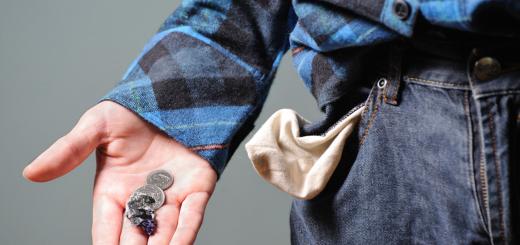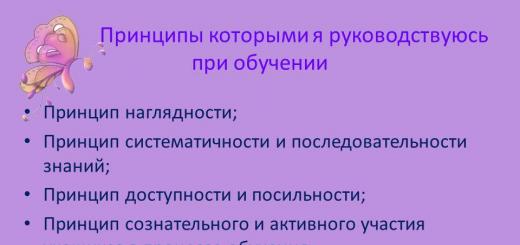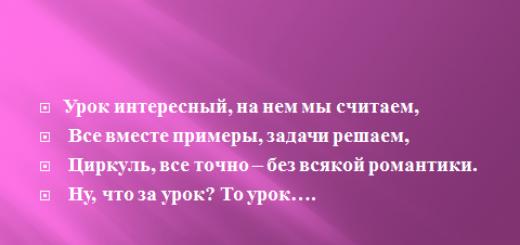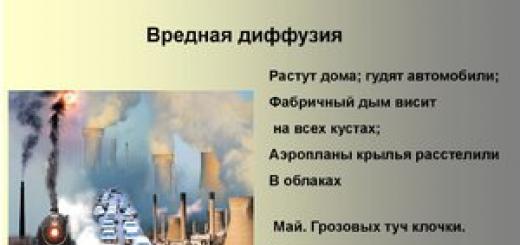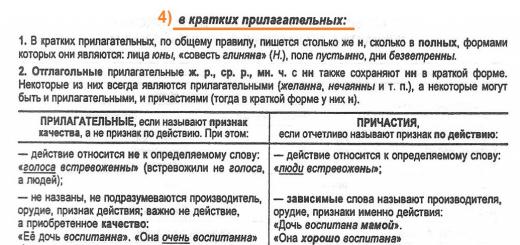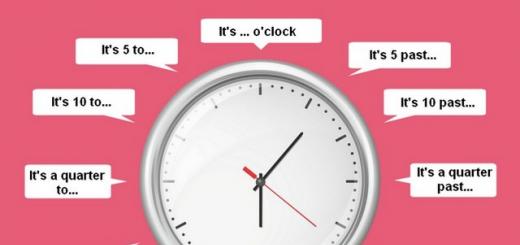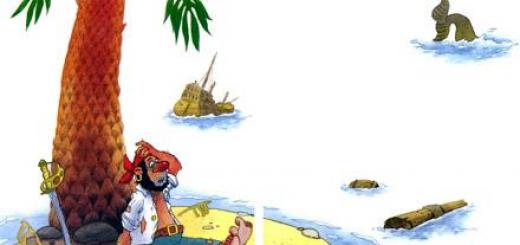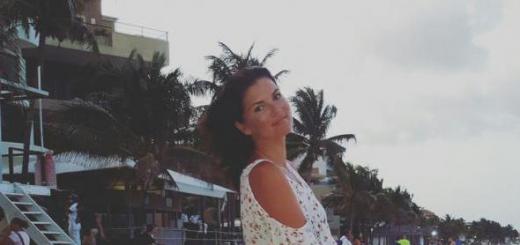Self-training in 2nd grade.
Target: formation of students’ skills of independent mental work.
Tasks:
repetition and consolidation of material learned in lessons;
develop memory, attention, thinking, fine motor skills;
to teach children to do their homework carefully, to develop educational and organizational skills to plan current work.
Equipment: books, notebooks, projector, cards for individual work, ruler
activities, geometric shapes, cube.
Progress of self-preparation
I. Organizational moment.
Stand up, everyone, beautifully,
Greet everyone politely.
Sit quietly with your back straight.
Let's all take a slight breath,
We will begin self-preparation.
Guys, today we have an unusual preparation. We see guests in our class who would like to see how we can work, how focused and collected we are, how we can overcome difficulties.
The success of our self-study will depend on your coordinated and friendly work in the class and remember the rules of self-study. Let's remember the rules of self-preparation.
Children. I came here to study
Don't be lazy, but work.
We work diligently.
Let's listen carefully!
Checking the workplace.
It's time to start doing your homework. Today we will do homework in two subjects: mathematics and reading. I ask you to check whether you have prepared your work area well enough.
Well, check it out, my friend,
Is everything in place?
Is everything alright?
Pen, books and notebook?
Is everyone sitting correctly?
Is everyone watching carefully?
Children: “We have a motto:
Everything you need is at hand"
Activating moment.
I will mark your activity in self-training on the activity line.
First, we will check your attention. Now we will play the “Yes” or “No” game.
I will ask questions and you will answer with yes or no.
Does a square have corners?
Are carrots blue?
Do you have ten fingers on your hand?
Is the tree taller than the bush?
Does it snow in summer?
Monday after Tuesday?
Does a bear have two paws?
Is Wednesday the third day of the week?
Is a week longer than a month?
Well done. The most attentive were __________________________. And they earned one piece of paper.
Guys, why do you think we define your activity with leaves? Because now is the time of year - autumn.
We are starting to do our homework mathematics.
Before we start doing our math homework, let's do a little math warm-up.
Let's count to 10 together? Direct and reverse counting. Game "Cube".
Tell me your neighbors numbers 6, 3.
Game "Silence".
Now listen to riddles about geometric shapes.
I have no corners.
And I look like a saucer.
On the plate and on the lid,
On the ring, on the wheel.
Who am I? (circle)
He's known me for a long time
Every angle in it is right,
All four sides
Same length.
What's my name? (square)
Three corners, three sides
Can be of different lengths.
If you hit the corners,
Then you’ll quickly jump up yourself (triangle).
We stretched the square.
And they presented it at a glance.
Who did he become like?
Or something very similar.
Not a brick, not a triangle.
It became a square (rectangle).
How many figures are there in total?
Game "geometric belt".
The most active were __________________________. And they earned one piece of paper.
Ex. for eyes
The eyes see everything around
I'll circle them.
It is possible to see everything with the eye -
Where is the window and where is the cinema?
I'll draw a circle with them,
I'll look at the world around me.
We close our eyes tightly,
We count to five together
Let's open it and blink.
And we continue to work.
In order for your numbers to be neat and beautiful when doing your homework, we will do finger gymnastics.
Ex. for hands
It's time for a physical minute.
We will prepare our hands for writing.
We'll shake our palms
Let's stretch each finger.
One two three four five
We'll start writing again.
To write beautifully
I need to stretch my fingers
One two three four five
We'll get five for the letter!
Exercise for the development of general “Flashlights”. (the flashlights came on, the flashlights went out).
II . Homework instructions.
Everyone will work using cards. You will all need to solve addition and subtraction examples.
What does fold mean?
What does it mean to take away?
Let's remember the components of addition and the components of subtraction.
Guys, open your notebooks.
I’ll open my notebook and put it in the right place.
Friends, I won’t hide it from you, I hold my hand like this.
I will sit straight and not bend over.
I'll get to work.
To ensure that your back remains straight, your eyes are sharp, and your notebook produces beautiful, even letters, let’s remember the rules of correct posture:
Sit up straight, legs together,
Let's take the notebook at an angle.
Left hand in place
Right hand in place
You can start writing!!!
III .Independent work of students.
IV. Bottom line.
What task did we do in mathematics?
Did you have any difficulties?
For accurate work in mathematics, you receive _________________________ slips.
I . Fizminutka:
The class raises its hands - that's it.
My head started spinning - that's two.
Three - three claps of your hands.
Four hands wider.
Five hands to miss.
Six - sit down quietly at your desks.
Questioning the duty officer.
What was the reading assignment?
II . Working with nature's calendar
Look out the window.
What time of year is it now? (Kaz.)
What changes in nature occur in autumn?
Tell me the autumn months? (Kaz)
III . Articulation gymnastics
raise your eyebrows up.
move your eyebrows.
puff out two cheeks.
puff out our cheeks one by one.
pull in both cheeks.
push the cheeks with the tongue.
bite the tip of your tongue.
stretch your lips into a tube - stretch them into a smile, showing your teeth.
stretch your lips into a tube - stretch them into a smile without showing your teeth.
Mouth open and close wide.
Breathing exercises:
Let's sit quietly, without moving,
Let's start breathing exercises.
Raise your shoulders, inhale through your nose.
Lower your shoulders, exhale through your nose.
Pronunciation of vowels while exhaling (slide).
Breeze and leaves
Children blow on the leaves and the leaves sway in the wind.
Speech gymnastics. (
slides)
III. - Guys, what fairy tale did you read in reading lesson today?
Vocabulary work. Slides.
Bubble – a transparent air-filled ball that appears in a liquid mass.
Straw – stalk of cereal without grains remaining after threshing.
Lapot - braided shoes made of ropes that wrap around the foot.
Per-re-tya-nu-lass- pulled too tight
Per-re-lo-mi-las- broke into two parts.
Ho-ho-tal- laughed loudly, burst into laughter.
IV . Independent work. Now I will start reading a fairy tale. you listen carefully and follow, then you continue reading.
Individual work Madet E., Petrenko R. Gerzhik D. (work with cards).
Mezhanoshin P., Mukhamedyan D., Zuev G. - find in the text the letters A, E of the words Straw, Lapot, Bubble and underline.
How did Bubble, Straw and Lapot want to cross the river?
What happened to Straw?
Why did Lapot fall into the water?
Did you like the fairy tale?
What exactly did you like?
Bottom line. Mark children on the activity line.
V . The result of self-preparation.
Self-preparation has come to an end. So, let's summarize.
Are you satisfied with your job?
What difficulties did you have?
I really liked the way you worked today. But let's see who was the most active today, who has the most leaves? Let's congratulate and clap him.
Our self-study has come to an end, and you will find out how you completed your homework if you read the inscription on the poster “WELL DONE.”
Self-training analysis.
This lesson was held in 8th grade "B". There are 9 people in the class. At the time of self-study, all students were present. I have been working with the students of this group for 2.5 years, as a class teacher and 1 year, as a teacher conducting self-study. KZ in the class in subjects is 10% - one student is a good student Bogomolova N, SOU 57%. According to the level of development, the class can be divided into 2 levels. To the reproductive and constructive levels of learning. These groups are not permanent; the distribution by level depends on the academic subjects and the complexity of the curriculum.
The children are very active, emotional, and enjoy participating in educational and extracurricular activities. The psychological justification for the activity includes evidence that:
The formulated triune didactic goal (TDG) of the lesson corresponds to the age capabilities of students and the tasks of their development at a given age level;
The structure, content and entire style of the lesson are aimed at achieving
supplied by the TDC;
The lesson provides for the creation of conditions for the implementation of basic
components of students' educational activities (educational and cognitive
motives, goal setting, control actions and self-control in the development of students’ independent work.
Goals:
Educational:
1.Expand, consolidate and systematize students’ knowledge in academic subjects: biology, Kazakh, algebra;
2.Teach students to apply the acquired knowledge in practice.
Correctional and developmental:
1.Create conditions for the development of memory, attention, thinking, and speech of students.
Educational:
1. To develop skills of independence, a culture of mental work, self-control, and the ability to work in groups.
2. Foster a positive attitude towards learning, the need and ability to complete homework in a timely manner and on time.
Forms of organization of cognitive activity: individual independent work, pair: student-consultant.
Forms of control : self-test, mutual test, teacher control.
Lesson technologies: elements of critical thinking technology, differentiated learning technology.
When organizing homework, the main thing for me is to create the necessary conditions for high-quality homework.
In the process of organizing self-training, I took into account the following factors: the level of preparedness of students in these subjects, the individual and psychological characteristics of each student, the range of their interests and abilities. When conducting self-training, the principle of a personality-oriented approach was implemented for students. The entire lesson is aimed at the comprehensive development and improvement of acquired independent work skills, the formation of rational skills
Use of study time. It is known that the result of the work, the activation of all stages, and the organization of students during preparation depend on how organized, clearly, and thoughtfully the teacher begins self-preparation.During self-training, I take a differentiated approach to different groups.
The first group most often receives complete independence and works in pairs or in a group. It includes students who easily master educational material and have certain skills and abilities to work independently. (Maltseva N, Bogomolova N, Isakova L, Cheremnova T)
The second group are children who are learning the material, but have a number of difficulties, are unsure of themselves, and need control over the correctness of homework, or a little help from me. They can gain freedom of action at a certain stage or when performing simple tasks. (Shalupenko R, Inozemtsev A, Kryukov A,
Polkovnikova V, Gulenkova G).Groups can change in composition, taking into account mutual sympathy, general development, and a combination of strong and weak.
Children are able to make independent notes in notebooks, work with textbooks, tables, and additional material. I carry out the control function in the process of self-preparation by frontally commenting on the check of completed work by students, analyzing the results of mutual checking, and in other ways.
When solving problems of educational development, it is important to practice interaction with subject teachers. That’s why I consult with colleagues in the system. I am interested in the educational dynamics of each student..
Self-preparation. Independent educational work in these classes is aimed at developing skills of self-education, self-education and is designed to contribute to the comprehensive development of students’ personality.
At the same time, new opportunities arise for students to develop a positive attitude towards learning, sustainable interests and skills for further self-educational work. During self-study, I maintain the order necessary for independent work and ensure the successful completion of tasks. Self-preparation is not a lesson. Unlike a lesson, this form of education, despite the fact that it is organized not at home, but in schools, contains self-educational principles and is characterized by independent educational actions of students.
The student’s state during self-study should be: active - independent, dependent - independent use of cooperation technology, differentiated learning technology.
At the end of the lesson, the Sinkwine technique was performed, which is an element of critical thinking. This technique was carried out for the purpose of reflecting the lesson.
It’s too early to talk about serious progress and results of my work. But at the same time, the guys began to take a more conscious approach to performing homework, understanding why they should do it, especially after they were entrusted with self-assessment. They are attracted by the opportunity to show their condition to everyone and among the first.I think I managed to achieve my goals while avoiding overload and fatigue of students, while maintaining productive motivation for learning.
Self-preparation.
Target: formation of general educational skills and abilities for successful mastery of subject knowledge, skills and abilities.
Tasks:
- educational:
consolidation of knowledge acquired in the lesson, formation of skills organize your workplace, plan current work, understand the educational task and aim yourself at its implementation, follow the sequence of doing homework within a certain time frame, carry out self-monitoring and self-analysis of educational activities;
- developing:
development of cognitive processes of students: attention, memory, thinking, speech, development of skills and abilities of independent work with a textbook, expansion of horizons, vocabulary;
- educational
nurturing sustainable motives for educational activities, cultural and mental skills, self-organization and self-control, a number of leading personality qualities - honesty, hard work, self-demandingness, independence.
Equipment: multimedia projector, laptop
Progress of self-preparation
Organizing time.
- Everyone, good afternoon everyone
Get out of the way evil laziness
Don't interfere with studying
Don't stop me from working!!!
- Check: is everything in place, is everything alright
Books, pens and notebooks?
Who has it all?
Maybe sit down quietly.
Well done! And now they sat down quietly, straightened their backs, pulled back their shoulders, and put their hands on the shelf.
- Tell me, please, what day, month, day of the week is today?
Formulation of the problem.
During self-study, we must remember what you have learned in class and prepare for the next working day in order to feel confident tomorrow and achieve new knowledge.
Look at the board, in what subjects do we need to prepare assignments for tomorrow? But you will find out what subject we will start our self-study with if you guess the riddle:

-The lesson is interesting, in it we think
All together we solve examples, solve problems,
Compasses, everything is accurate - without any romance.
Well, what's the lesson? That's a lesson...
Yes, that's right, let's start with mathematics.

Mathematics.
Verbal counting.
In order for us to get ready to do our homeworkmathematics Let's do a little warm-up.

One egg is cooked for 4 minutes. How long does it take to boil 5 eggs?
(as many)
2) Three days have passed since Sunday, what day was it? (Thursday)
3) If you eat one plum, what remains? (bone)
Next task: Count along the chain.

Next task: Increase each number by 5.


Now it's time to do your math homework. Please tell me what we were asked today?
Before we start doing our homework, let's stretch our fingers a little.
Finger gymnastics.


We open our notebooks, write down our homework beautifully and complete the task.
Sit up straight, legs together,
Let's take the notebook at an angle.
Left hand in place
Right hand in place
You can start writing!!!
Dynamic minute.


Russian language.

- Listen to the riddle:
Every student writes carefully.
We read the rules and learn them by heart.
Well, guys, what kind of lesson is this? (Letter)
That's right, then it's time to do your writing homework.
But before you start doing your homework, I suggest you play a little.
Game "Snow Riddles".

Doing homework.

Now it's time to complete the writing task.
Now let’s open our notebooks, write down our homework beautifully and complete the task.
Sit up straight, legs together,
Let's take the notebook at an angle.
Left hand in place
Right hand in place
You can start writing!!!
Doing homework. Individual work with weak students. Additional cards for strong students.
Peer review of homework completion.
Breathing exercises.
And now you and I will have a little rest.
Reading.

Guess the next riddle.
First, syllable by syllable, and now as we want.
We teach easy poetic lines,
We can instantly distinguish a story from poetry,
Inspiration itself comes to us with a book,
And everyone is in what lesson? (Readings)
Speech warm-up.

Before completing the reading task, we will conduct a speech warm-up. Look at the screen. Let's read what is written here. We will read slowly at first, pronouncing the words clearly, then with acceleration.
Exercise for the eyes.

Let's work with our eyes a little.

Doing homework.

Now it's time to do your reading homework.
Please tell me what we were asked today?
Doing homework.
Summing up the results of self-training.
So, guys, our lesson is over. We have completed our homework and done a lot of additional assignments.Well done today, you worked hard and completed all the tasks.Thank you.

Municipal state-owned special (correctional) educational institution for students and pupils with disabilities “Special (correctional) general education boarding school of the VIII type No. 13”
Self-preparation
6th grade
Compiled by: Efimenko I.V.
Educator
Yurga 2015
Self-study in 6th grade.
Tasks:
Developmental:
hard work, accuracy, interest in learning
Correctional and developmental goal: to develop auditory and visual attention, memory when calculating; develop the ability to comment on your actions, give a verbal report on the completion of the task.
Progress of self-preparation
I. Organizational moment
The bell rang for self-preparation.
Everyone, good afternoon everyone
Get out of the way evil laziness
Don't interfere with studying
Don't stop me from working!!!
Guys, greet your guests with a nod and give them a friendly smile.
I smile at you, you smile at me. Smiling can show your friendliness and improve everyone's mood. A good mood always helps to cope with any task and achieve good results.
Guys, tell me, are you warm? (Yes)
Is it light in the classroom? (Yes!)
Has the bell already rung? (Yes!)
Have you completed your self-study yet? (No!)
Just started self-training? (Yes!)
Do you want to study? (Yes!)
So everyone can sit down.
Look in your diaries, in what subjects do we need to prepare assignments for tomorrow? But you will find out what subject we will start our self-study with if you guess the riddle:
(slide 2)
The lesson is interesting, in it we believe
All together we solve examples, solve problems,
Compasses, everything is accurate - without any romance.
Well, what's the lesson? That's a lesson...
Yes, that's right, let's start with mathematics. (slide 3)
In order for us to get ready to do our homework mathematics Let's do a little warm-up. (slide4)
- Boil one egg for 4 minutes. How long does it take to boil 5 eggs?
(as many)
2) Three days have passed since Sunday, what day was it? (Thursday)
3) If you eat one plum, what remains? (bone)
Guys, who can tell what topic you are studying in class? (slide 5)
Who can name the components when multiplying?
Now turn your attention to the board, let's do some math orally, numbers are given (slide6)
145, 1268,3746,122,5478,9922
Name the even numbers
Name the odd numbers
What number are even numbers divisible by?
Let's repeat the multiplication table as follows:
*** 4
Solve chains of examples:
*7 -13 \5 *7
55 \5 *8
We will perform the next task divided into two groups; we should connect the correct answers with examples with arrows:
4*5= 36 5*6 = 56
3*7= 34 7*8= 31
6*8= 21 6*9= 24
9*4= 20 4*6= 54
Table multiplication answers given (slide 7)
3,6,9,12,15,18,21,23,24,27,30
Guys, these are the answers to the multiplication table for what number? (On 3)
What mistake was made? (23 is not a tabular multiplication answer)
Checking homework.
Physical education minute. (electronic version)
Russian language
Strong, powerful, beautiful, great!
Beautiful, Russian is our language
The likes of him have never seen the light of day
There is no comparison to him!
Guys, what did we hear that was familiar in this poem? What is this poem talking about? (About Russian language)
We start doing homework in the Russian language (slide 8) and start with vocabulary work:
Group work
1) Each group was given cards with vocabulary words; on the cards you need to insert an unstressed vowel. After completing this task in groups, one participant from each group completes this task on the board.
Task card:
D...bycha, b...wealth, m...distance, woman...na, k...mandir, ...kean, d...rector, ...ntenna.
Guys, who can name the topic you are studying in Russian language class?
(slide 9)
Guys, from the proposed vocabulary words, you need to create a phrase - a noun and an adjective. Next I show cards with the task, and you must decline this phrase according to the task on the card.
And now the officers on duty will announce which exercise is assigned to be performed.
Doing homework.
Checking completed homework.
Reading.
- In order to find out which subject we are moving on to next, you should read this word. – echtney (slide 10). We start doing our reading homework.
The attendants will tell you what the reading assignment is, but before you start reading, let’s do a little warm-up for your eyes.
Exercise for the eyes.
Now we’ll do a speech warm-up, remember the tongue twister we’re working with, speak first slowly, clearly pronouncing the words, then with acceleration (slide 11)
We will talk
We will reprimand
So correct and clear
So that everything is clear.
Let’s start reading the story “Puss in Boots”, first by buzzing reading and while reading we determine how many characters are in this story. Then we continue to read by roles. Work on issues.
Summing up the results of self-preparation. (slide 14-15)
Self-analysis of self-preparation.
The purpose of self-training: to instill in students the skills of self-educational work on planning, assimilation, consolidation, control and evaluation of acquired knowledge.
Tasks:
Educational: creating conditions for practicing skills and abilities in oral and written calculations; development of skills and abilities to use theoretical knowledge in practice when multiplying by a single-digit number in a column.
Developmental: develop interest in learning through additional, corrective tasks, mental processes (attention, thinking, speech); physical activity (through various physical breaks) in order to increase the level of performance; cognitive activity; broaden children's horizons.
Educational: to cultivate independence, activity, discipline, responsibility,hard work, accuracy, interest in learning, friendly attitude towards each other, cultivate criticality and an adequate attitude towards the results of their activities.
Correctional and developmental goal: to develop auditory and visual attention, to develop logical thinking, memory when calculating; develop the ability to comment on your actions, give a verbal report on the completion of the task.
During self-training I used the following teaching methods:
according to the method of supplying the material:
Verbal (story, conversation, explanation);
Visual (show, demonstration);
Practical (performing work using acquired knowledge);
by the nature of the activities of students/pupils:
Group;
Individual;
A variety of techniques were used to involve children in active activities:
Collective forms of activity with the aim of developing the experience of communication and working in a group;
Visual aids and supporting materials for the development of all the child’s senses;
Games are tasks for developing imagination, creativity, attention, memory, thinking, speech, and replenishing vocabulary.
At the motivational-target stage, she created a positive psychological mood through the words spoken in the organizational moment, activated the children’s attention, and the students were positively disposed to self-preparation.
All practical tasks were aimed at fulfilling the goals and objectives of self-training and were designed taking into account the age characteristics of children of secondary school age. The children did not experience any difficulties during conversations and actively answered my questions. There were no difficulties when completing practical tasks. She gave only positive characteristics to the results of their activities, which stimulated the children and increased their activity in self-training. Used various types of checks: self-check, mutual check. To relieve tension and fatigue, physical exercises for the eyes and for movement and changing types of activities were suggested.
In my opinion, all the guys were active, they were interested in the lesson. I think that the guys liked most of all the tasks involving mental calculation, a warm-up for the eyes. Due to the individual characteristics of the child’s personality - slowness, Nikolai Petrov, Lera Matyukhina, Vanya Vishchenko, the children did not quite meet the deadline when completing their homework.
Used ICT, a person-centered approach (children assessed themselves independently), an individual and differentiated approach
(individual tasks), health – saving technologies.
Educator I.V. Efimenko
